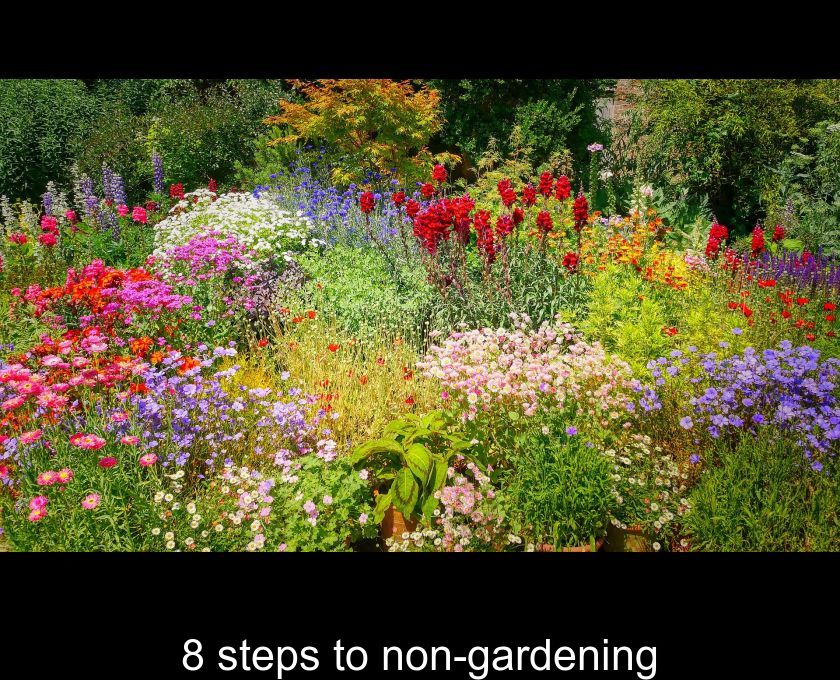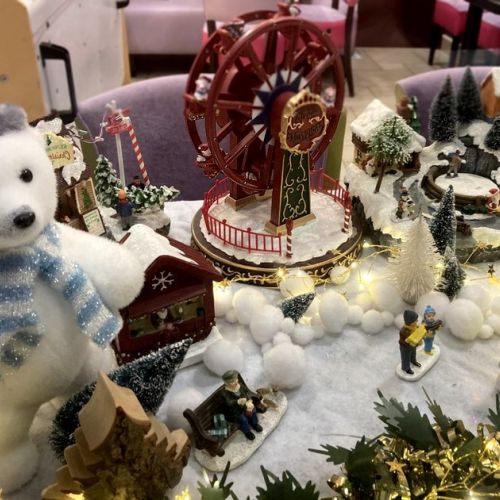8 Steps To Non-gardening
It's time to rediscover the impeccable garden - here's how to get started.
Another idea of the garden
Long ago,nature was a wild thing - it was beautifully unruly, thriving, doing its thing all over the planet. In this context, the first manicured gardens make a bit of sense - they were a way to tame nature, to create a controlled beauty from the chaos of the wild.
Today, we have cut, burned, chopped, lumbered, paved and built on so much nature that less than a quarter of the planet's land is still wild. Natural habitats and entire ecosystems have been wiped out for agriculture (which now accounts for 40% of the land on Earth) and other forms of development.
At this point, the least we can do is allow our tidy lawns and gardens to return to a more natural state. We often talk about 'rewilding,' but I've also seen the term 'non-gardening' - which emphasizes the 'gardening' part. We don't need to stop gardening, per se, something many of us love, we just need to do it with a new mindset. Rather than striving to create such a controlled environment, non-gardeners can strive to reverse ecological decline and become a much-needed refuge for native flora and fauna.
There are many ways to transform a primary plot of land into a skillfully scowling place that makes nature feel welcome; here are some starting points.
Know your local heroes
If you don't already know, do some research and find out which plant species are native to your area. These are the ones that will best adapt to your climate with the least amount of help, and will get along best with local wildlife. Look for plants that will be generous to pollinators; avoid non-native species.
Replace grass, switch to clover
The time for neat lawn is over. Their voracious appetite for water and chemicals is simply unsustainable; meanwhile, they rob all kinds of organisms of the space they need to thrive. We are firm believers in clover lawns.
Grow things you (and wildlife) can eat
You may not want to make a complete 'forest garden', but at least plant things that are beautiful to look at and good to eat for humans and other creatures.
Refrain from using toxic pesticides
Ideally, one's garden should be a harmonious ecosystem where everything works in concert. In general, it's a good idea to stay away from pesticides, because you might kill something that would otherwise be food for another creature. But if things are out of whack and you have an abundance of pests, consider an all-natural pesticide so there's no collateral damage down the road.
Use natural herbicides
Innocent weeds are so unfairly maligned - what have they ever done, other than being an unwanted plant? That said, the invasive type of weeds are unwelcome, as they crowd out native plant species and don't always get along so well with native wildlife. Whatever type of weeds you want to control, avoid strong herbicides that destroy indiscriminately.
Think about a water plan
All creatures, large and small, love a little water; and offering some in your garden is a great idea. Wildlife gardening expert Jenny Steel tells The Guardian, 'Birds need to drink and keep their feathers clean, so if you have room for a small wetland, like a small pond, a pond, it's a fantastic habitat. It's a place where not only will birds and mammals come to drink, but you'll also find dragonflies, and frogs will spawn.' If a pond is prohibitive, any small water feature will do, even a bird bath.
Demolish fence, create a hedge for wildlife
Walls and Fences limit the natural wandering of animals, but a wildlife hedge not only serves as a fence, but also allows passage for creatures while providing a natural habitat for birds and insects. A natural hedgerow resembles hedges in the UK and includes a variety of plants - a mix of taller and shorter species, filled with fruit for food and nooks and crannies for cover and nesting. And it's much prettier.
Stop raking
The leaves fall, the rakes come out. But nature got along just fine before humans started raking leaves - and in fact, leaves should definitely be left on the ground. They form a natural mulch that helps fertilize the soil as it decomposes, and best of all, leaf litter is a thriving habitat for insects and small creatures. Plus, no bags ... and no rakes!









